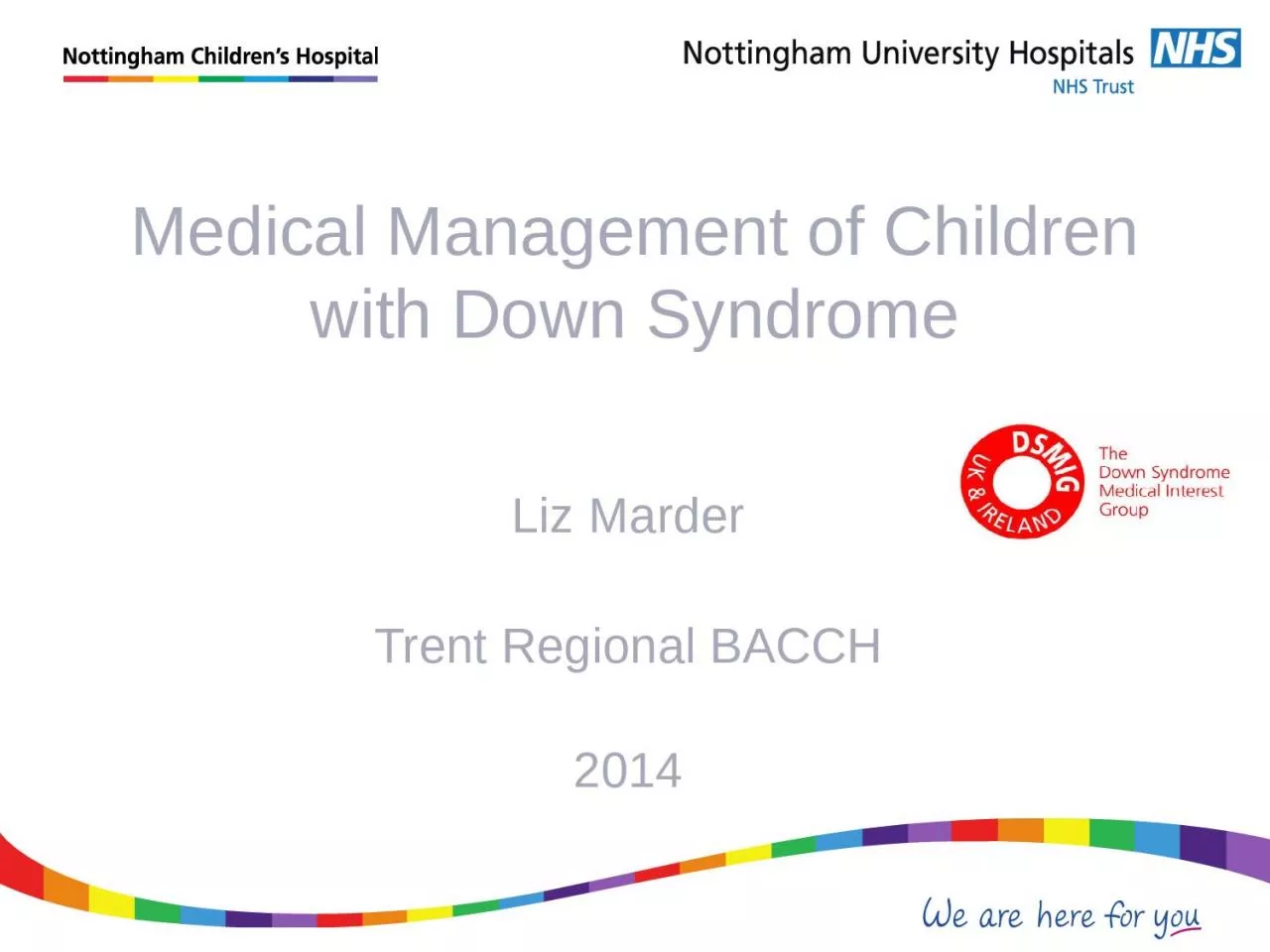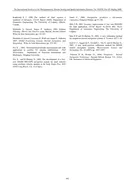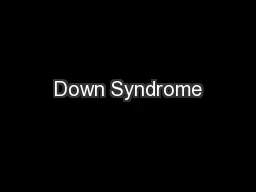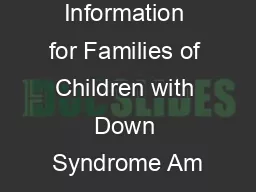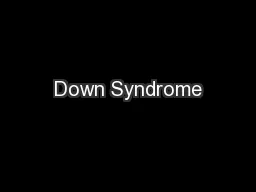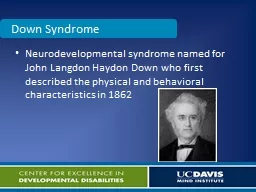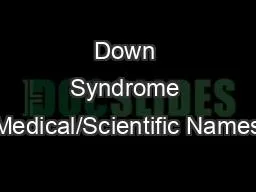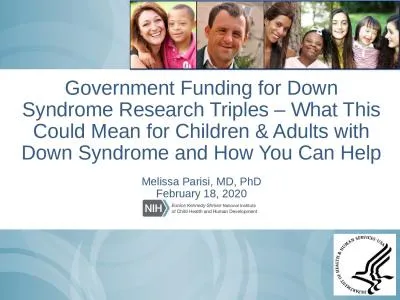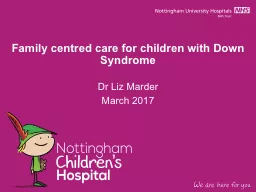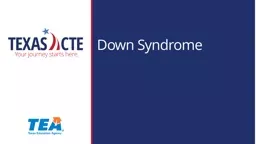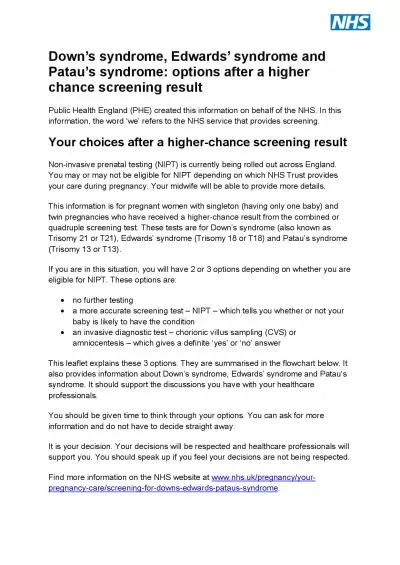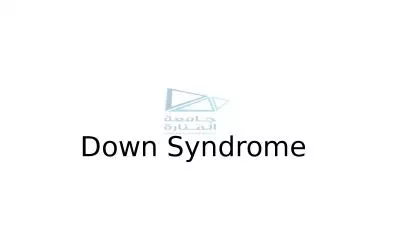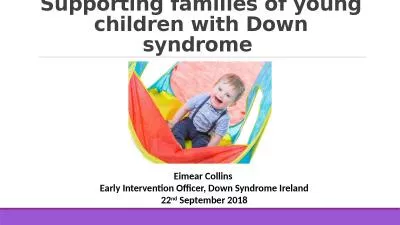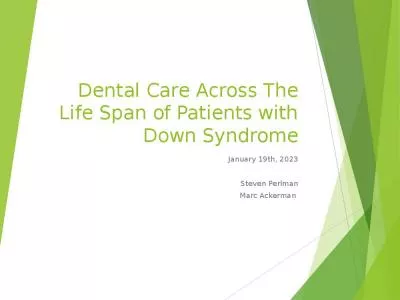PPT-Medical Management of Children with Down Syndrome
Author : caitlin | Published Date : 2022-06-28
Liz Marder Trent Regional BACCH 2014 What is the role of the doctor Help make initial diagnosis Give information about Down syndrome Screen for likely
Presentation Embed Code
Download Presentation
Download Presentation The PPT/PDF document "Medical Management of Children with Down..." is the property of its rightful owner. Permission is granted to download and print the materials on this website for personal, non-commercial use only, and to display it on your personal computer provided you do not modify the materials and that you retain all copyright notices contained in the materials. By downloading content from our website, you accept the terms of this agreement.
Medical Management of Children with Down Syndrome: Transcript
Liz Marder Trent Regional BACCH 2014 What is the role of the doctor Help make initial diagnosis Give information about Down syndrome Screen for likely medical problems . d5772557718577995734757361577255772557754576905734757602577185762657347D 573475736257630577185775457740576305734757725576405734757754577815762657693576305774457347577255771857347 d5772557718577995734757361577255772557754576905819757347D576305771157 Vol XXXVII Part B5 Beijin g 2008 878 brPage 3br 57347T 57347T gz gy gx gx gx gx gzy gzx gyz gz gy gx gz gzy gzx gy gyz gx gz gy gx gz gy gx l gx l gy l gz gx gy gz g 0 0 ttt ttt ttt aa tavv tvxx t ttt ttt The International Archives o Training. The Center for Life . Enrichment. Resource: . www.mayoclinic.com. . . www.youtube.com. What is Down Syndrome?. Down syndrome is a genetic disorder that causes . a lifelong . Down syndrome is a common condition caused by having Rebecca Morra & Amanda Patterson. Overview. Definition. Diagnosis. Physical Traits. Associated Health Problems. Working with Patients. Fun Facts. Summary. Questions . What is Down Syndrome?. Individual has a complete or partial extra copy of chromosome 21.. Down Syndrome. 1958 Jerome Lejeune and his team identified trisomy 21 (47 chromosomes-one extra chromosome 21 in cells) as cause of Down Syndrome. Only 2 years after it was discovered that the typical number of . Trisomy . 21 . 47,XX,+21 . 47,XY,+21. Module 2 Culminating. Down Syndrome: An Overview. Down Syndrome . is a set of physical and cognitive symptoms . (mild to moderate intellectual delays) . that results from having . Melissa Parisi, MD, PhD. February 18, 2020. What if researchers studied…. …why some babies with Down syndrome get leukemia? . …the ways children with Down syndrome communicate, learn and develop? . Syndrome. Dr. Liz Marder. March 2017. . . The Nottingham Down syndrome service . How . we forge a partnership with families. UK . Personal Child health record – Down syndrome chart . Working with the DSA’s. A genetic disorder that causes delays in physical and intellectual development.. Causes of Down Syndrome. Caused by extra genetic material from chromosome 21. Prenatal Testing. Amniocentesis:. procedure in which a small sample of amniotic fluid is drawn out of the uterus through a needle inserted in the abdomen. Patau’s syndrome: options after a higher chance screening result pregnancyre/screeningfordownsedwardspataussyndrome . This flowchart shows your options. Afulltextdescriptionthispathway is also What is Down Syndrome?. Down syndrome is a condition in which a person has an extra chromosome. . Chromosomes are small “packages” of genes in the body. They determine how a baby’s body forms and functions as it grows during pregnancy and after birth. . Eimear Collins . Early Intervention Officer, Down Syndrome Ireland. 22. nd. September 2018. Early Intervention Officer. Role: . • Support and advice for families of young children (birth – 6 years) . January 19th, 2023. Steven Perlman. Marc Ackerman . BARRIERS TO CARE. Degree of Dependence on Others. Finances. Attitudes of Care Provider. Availability of Professional Care. Handicap Access. STIGMA.
Download Document
Here is the link to download the presentation.
"Medical Management of Children with Down Syndrome"The content belongs to its owner. You may download and print it for personal use, without modification, and keep all copyright notices. By downloading, you agree to these terms.
Related Documents

